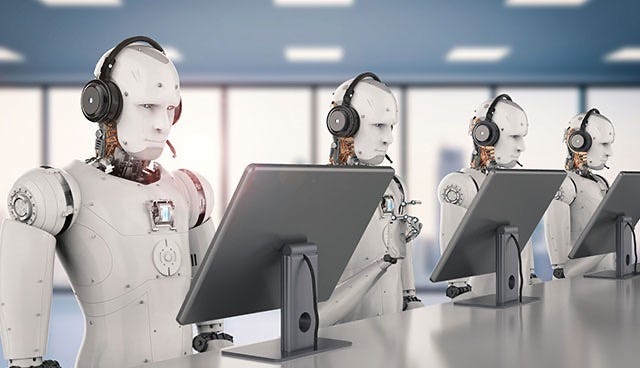The Rise of AI: Job Displacement and Real-World Impacts

The advent of Artificial Intelligence (AI) has ushered in a new era of technological innovation, transforming industries and reshaping the job market. While AI brings numerous benefits, there is growing concern about its impact on employment. In this blog post, we will explore real-world cases where AI is replacing jobs and discuss the broader implications for workers and society.
- Content Creation and Journalism:
Real Case: AI-Powered Content Generation in Media: Media organizations worldwide are integrating AI tools into their content creation workflows. These tools utilize Natural Language Processing (NLP) and machine learning algorithms to produce articles, reports, and even news stories. Companies are leveraging these technologies to streamline the content generation process and enhance efficiency.
Impact: Potential Job Displacement in Content Creation Roles:
The widespread adoption of AI-driven content generation raises concerns about potential job displacement for certain roles in traditional content creation. Journalists, content writers, and entry-level editorial positions could be affected as routine and data-driven content production becomes automated. This shift challenges the conventional structures of media organizations, prompting a reevaluation of the human workforce’s role in content creation.
The integration of AI in content creation is a reality that media organizations must navigate. While there is potential for job displacement in certain roles, the symbiotic relationship between AI and human oversight offers a pathway for the evolution of journalism and content creation. Embracing this transformation requires a commitment to ethical practices, quality journalism, and continuous learning. As the media landscape continues to evolve, finding a balance that harnesses the strengths of both AI and human expertise will be essential for shaping a future where technology and journalism coexist harmoniously.
2. Driverless Vehicles:
Real Case: Rise of Autonomous Vehicles in Transportation: In recent years, major players in the automotive and technology sectors have made significant strides in developing and testing autonomous vehicles. Companies like Tesla, Waymo, and Uber are at the forefront of this transformative shift, introducing self-driving technologies that promise increased safety, efficiency, and reduced operational costs in transportation.
Impact: Potential Job Displacement in the Transportation Sector:
One of the most significant concerns surrounding the integration of autonomous vehicles is the potential job displacement in the transportation sector. Truck drivers and delivery personnel, who have long been the backbone of the supply chain, face the prospect of their roles being automated. The automation of transportation could lead to a paradigm shift in the job market, particularly for those engaged in routine and long-haul driving.
As autonomous vehicles become a reality, the potential job displacement in the transportation sector underscores the need for thoughtful planning and a proactive approach to workforce transitions. Balancing the benefits of automation with the preservation of employment opportunities requires collaboration between industry stakeholders, policymakers, and the workforce. By acknowledging the challenges and embracing opportunities for reskilling and upskilling, the transportation sector can navigate the road ahead and strive for a harmonious integration of technology and human expertise.
3. Automated Customer Service:
Real Case: AI-Driven Chatbots Revolutionizing Customer Service:
In response to the increasing demand for quick and efficient customer support, many companies have integrated AI-driven chatbots and virtual assistants into their customer service operations. These intelligent systems leverage Natural Language Processing (NLP) and machine learning algorithms to understand and respond to customer queries in real-time. They are deployed across various platforms, including websites, mobile apps, and messaging services.
Impact: Reduction in Customer Service Jobs, Specifically Routine Query Handling:
The integration of AI-driven chatbots has undeniably enhanced the efficiency of customer service operations. However, this efficiency comes at a cost. Routine query handling, a task traditionally performed by human customer service representatives, is increasingly being automated. As a result, there is a notable reduction in the demand for entry-level customer service roles that involve addressing repetitive and straightforward inquiries.
The integration of AI-driven chatbots in customer service is a testament to the relentless pursuit of efficiency and responsiveness in today’s business landscape. Acknowledging the impact on routine query handling jobs prompts a broader conversation about the evolving nature of customer service roles. Companies must navigate this shift with sensitivity, providing avenues for upskilling, and ensuring that the synergy between AI and human expertise enhances, rather than diminishes, the overall customer experience.
Damnn!!!!
ReplyDelete